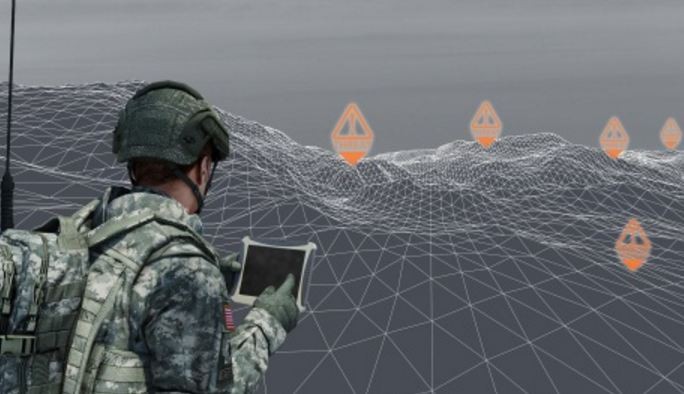The U.S. Defense Advanced Research Projects Agency (DARPA) and British defense firm BAE Systems have developed a new lightweight, handheld tactical sensor that lets U.S. soldiers easily detect and identify enemy electronic jammers on the battlefield.
It's a given electronic warfare is an intrinsic part of the new warfare dominated by electronic attack and defense. The Russians drove home the value of electronic warfare (EW) by using EW to enhance the lethality and effectiveness of their ground attacks against the Ukrainian Army in eastern Ukraine.
The United States, however, is playing catch-up to Russia. It de-emphasized EW in favor of counter terrorism needs in the low-tech wars it's waged since 2001 when it invaded Afghanistan.
DARPA's new handheld cognitive electronic warfare technology allows users to better understand radio frequency (RF) signals for enhanced situational awareness on the battlefield. The technology was developed under DARPA's Computational Leverage Against Surveillance Systems (CLASS) program and the Cognitive radio Low-energy signal Analysis Sensor ICs (CLASIC) program.
This handheld sensor quickly detects and identifies multiple interfering signals that prevent or obstruct battlefield communications. These enemy signals are emitted by jammers across a wide spectrum in changing and challenging environments. Once identified, the source of these signals can be pinpointed and destroyed.
The new sensor can be used across multiple platforms and can integrate into a variety of EW, signals intelligence and signal receiver and communication systems, both large and small.
"By drastically reducing the size, weight, and power of this new cognitive EW system, we're making it easier for our warfighters to be aware of, classify and manage a wide range of signals in the battlespace, which is crucial for tactical situational awareness," said Joshua Niedzwiecki, director of Sensor Processing and Exploitation at BAE Systems.
"Better situational awareness on the battlefield means superior protection for our troops and a greater ability to defeat hostile threats."
This new handheld EW capability improves on today's portable spectrum analyzers, which are often bulky, power hungry, and unable to handle interference or classify the signals they detect.
Using advanced signal processing algorithms, BAE Systems radically reduced the time and the computing power needed to process detected signals to such an extent that the new system uses only one low-power chip. The result is a 10-times reduction in size, weight, and power compared to conventional spectrum analyzers.
During recent field tests, the new technology successfully detected and identified more than 10 signal types across a wide bandwidth in the presence of interference.



























